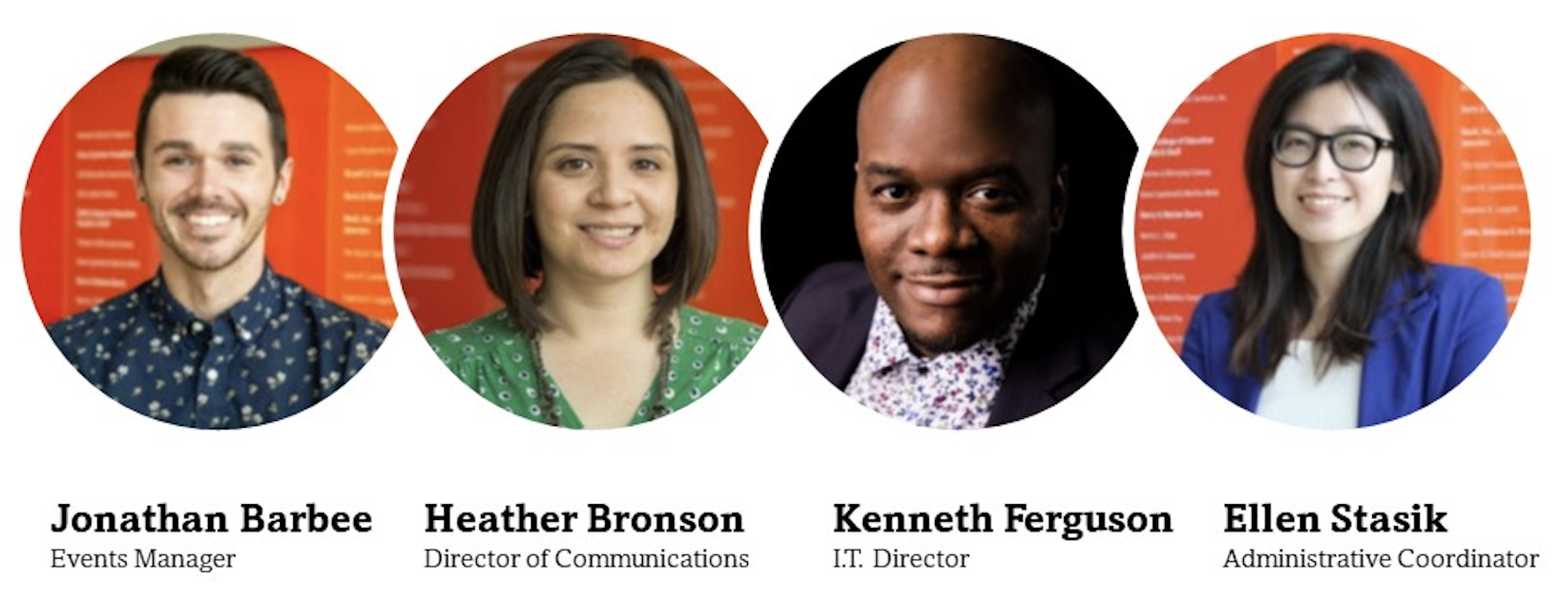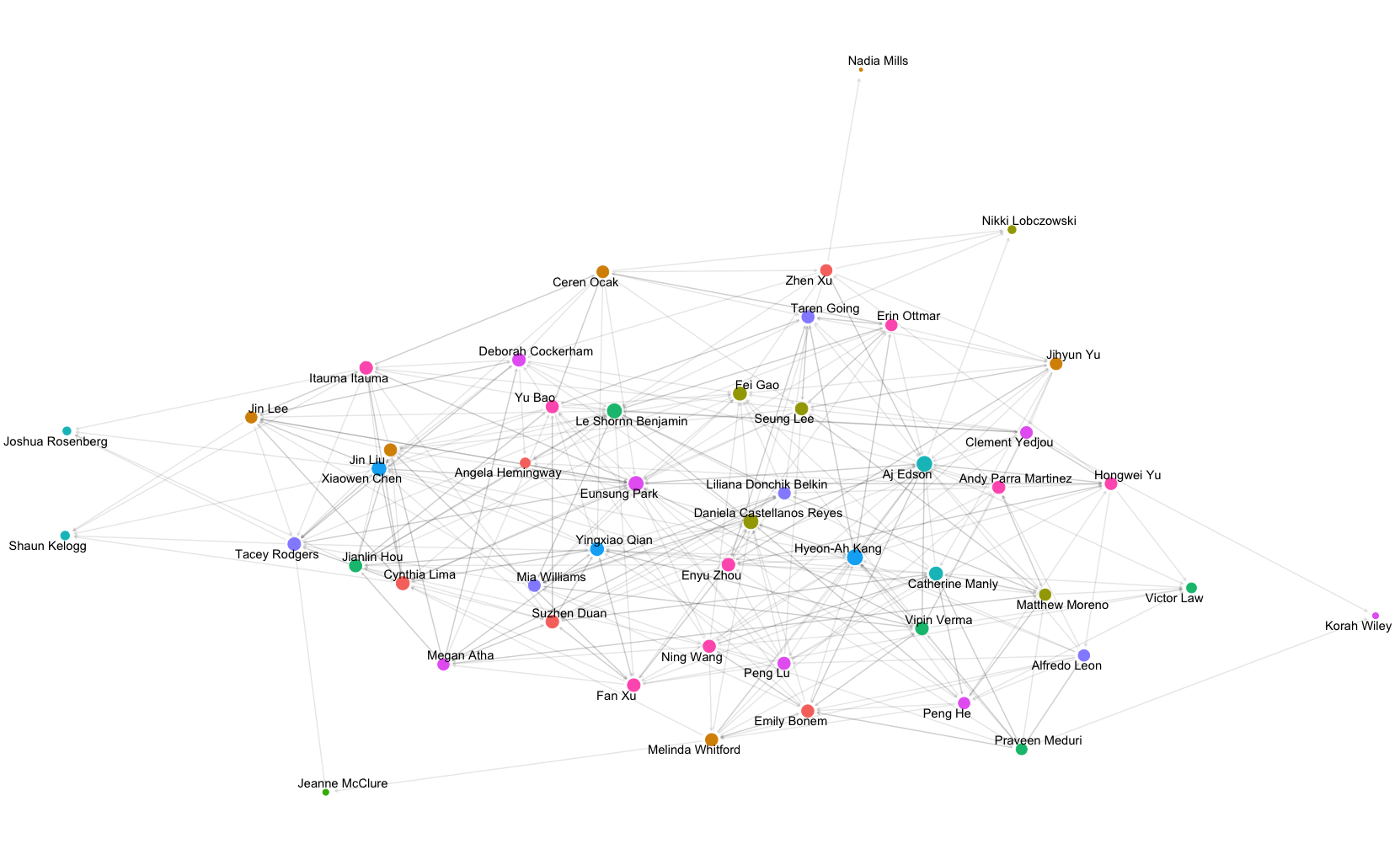The LASER Institute
Orientation Module: Welcome Slides
Welcome Notes
1. Welcome to the Friday Institute!
2. Meet the LASER Team
3. What is Learning Analytics?
4. LASER Institute Core Components
5. Goals for the Year, the Week, and Today
The Friday Institute for Educational Innovation
At The Friday Institute, our mission is to advance K-12 education through innovation in teaching, learning and leadership so that ALL students are prepared to succeed in a rapidly changing world.
Educate. We conduct research, evaluation and professional learning.
Innovate. We design supports, tools and structures for educational change.
Inspire. We convene and collaborate with partners in education, government and private industries to inform standards, policy and practice.
The LASER Institute is a prime example of how we Think and Do at the Friday Institute and we hope that you will carry this mission and vision forward!
The Friday Institute Operations Team

Goals of the LASER Institute
The LASER Institute is a year-long professional development program designed to build the capacity of participating scholars in three core areas:
Disciplinary Knowledge: Deepen their understanding of LA methodologies, literature, applications and ethical issues as they relate to STEM education and equity.
Technical Skills: Develop proficiency with R/Python, Quarto, GitHub and other tools used for collaboration, reproducible research and computational analysis.
Social Capital: Expand their professional networks, connecting with researchers and experts in LA related fields, as well as other scholars focused on STEM education.
LASER BEAM
LASER: Broadening Education in Advanced Methods (LASER BEAM) is the next phase of the LASER Institute funded by NSF in which participants will:
Learn from knowledgeable instructors with deep expertise in Learning Analytics and associated research methods.
Teach colleagues or students at their home institutions using curriculum materials developed for the LASER Institute.
Structure of LASER
The LASER Institute consists of two core components:
Summer Workshop: An intensive 5-day program consisting of learning labs, guest speakers, planning sessions, and community-building activities.
Online Community: An online community of practice for ongoing networking and support throughout the year.
Summer Workshop Sessions
Prior to the Summer Workshop, participants:
complete a needs assessment to identify their teaching interests, experience with software packages, and skills and knowledge in relation to LA and advanced methods;
work through basic R/Python tutorials beginning in May and which must be completed prior to the workshop;
engage in an initial community building activity designed to get to know each other prior to the Summer Institute.
Community building activities help participants create a sense of community by sharing their backgrounds, interests, and experiences, participants will identify commonalities and differences.

Content
LA Workflows
Network Analysis (SNA & ENA)
Text Mining
Machine Learning
Knowledge Tracing
Relationship Mining
Instruction
Conceptual Overviews
Code-Alongs
Readings & Reflection
Case Studies
Badges
Microcredentials
Each day includes small group activities to help participants:
design a customized instructional plan at their home institutions;
adapt curriculum and technology resources for their own contexts;
gather feedback to improve instructional materials.
LASER faculty, scholars, and Advisory Board members discuss LA related topics such as:
researcher-practitioner partnerships
legal and ethical issues
emerging techniques
frameworks and workflow
teaching computational research methods
Online Community
Ongoing support is provided to participants during the academic year through:
Virtual Module Sessions are offered to scholars every month to continue their professional learning.
Monthly Check-Ins for community building and to gauge progress on implementing instructional plans.
Asynchronous Activities consisting of facilitated discussion channels and informal Q&As are hosted on our Slack workspace.
Resource Repositories housing all the curriculum materials needed to teach with, and learn from, the LASER curriculum.
The LASER Team
NC State University:
- Shaun Kellogg (PI), Shiyan Jiang (Co-PI), Gemma Mojica (Co-PI), Jeanne McClure, Daria Smyslova
University of Pennsylvania:
- Ryan Baker (PI), Liz Cloude (Co-PI), Zhanlan Wei, Yilin Yiu, Richard Scruggs
University of Tennessee - Knoxville:
- Joshua Rosenberg
Acknowledgements

This work was supported by the National Science Foundation grants DRL-2025090 and DRL-2321128 (ECR:BCSER). Any opinions, findings, and conclusions expressed in this material are those of the authors and do not necessarily reflect the views of the National Science Foundation.
